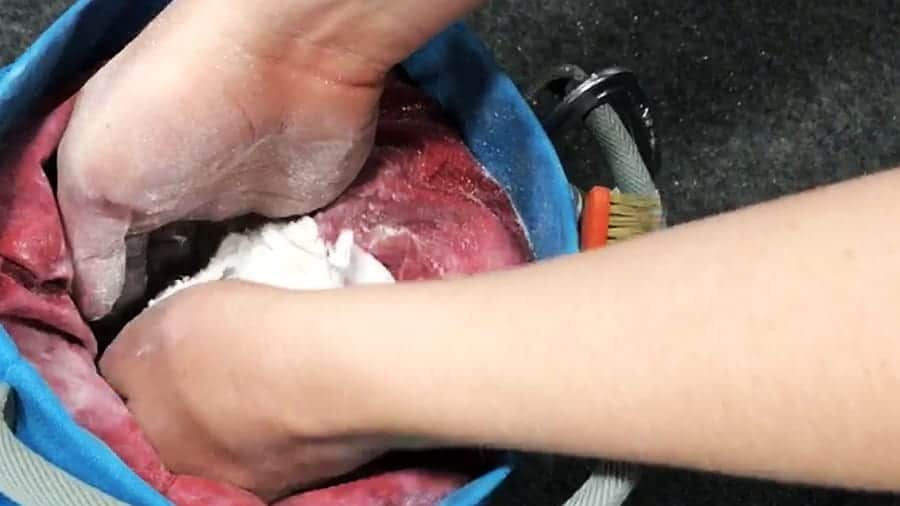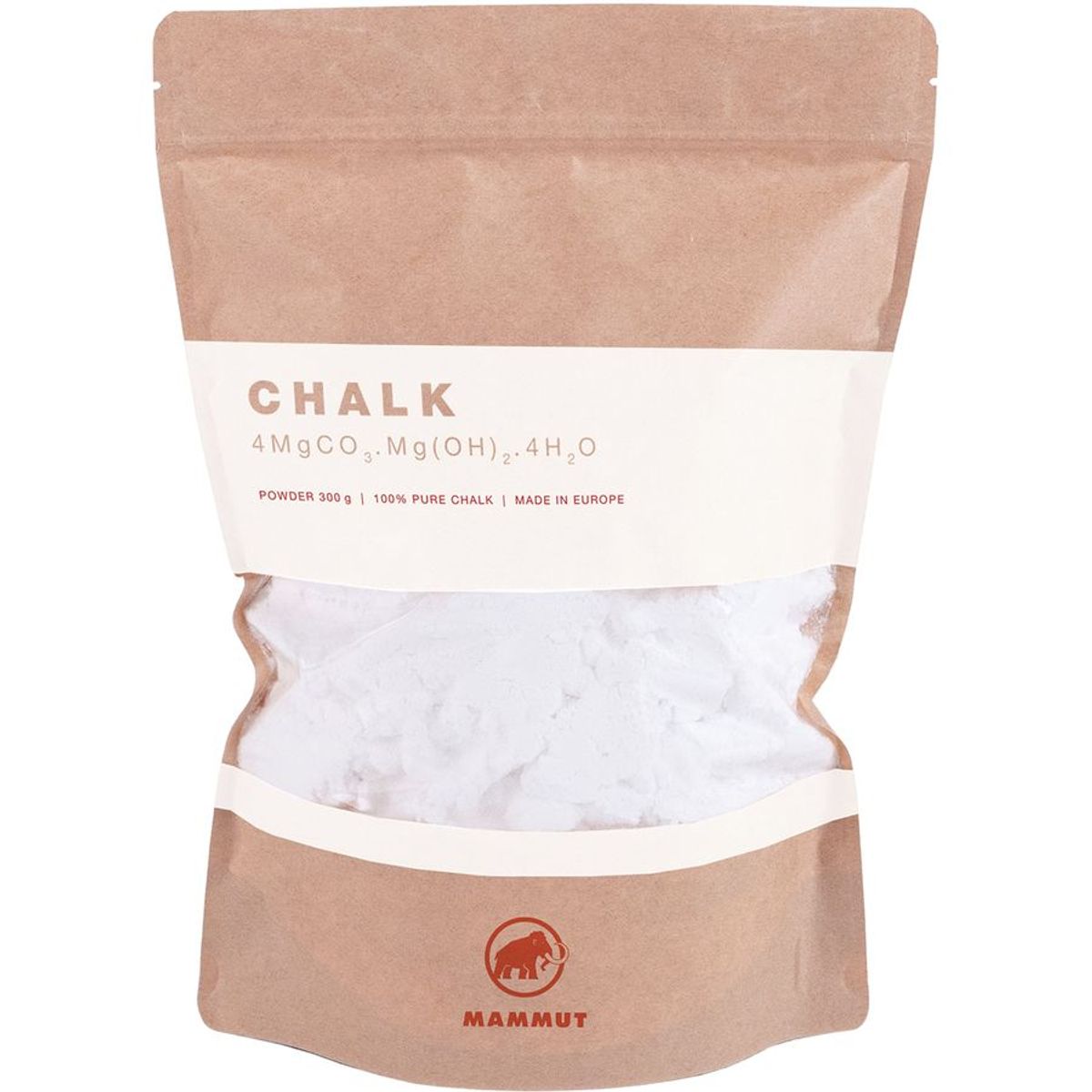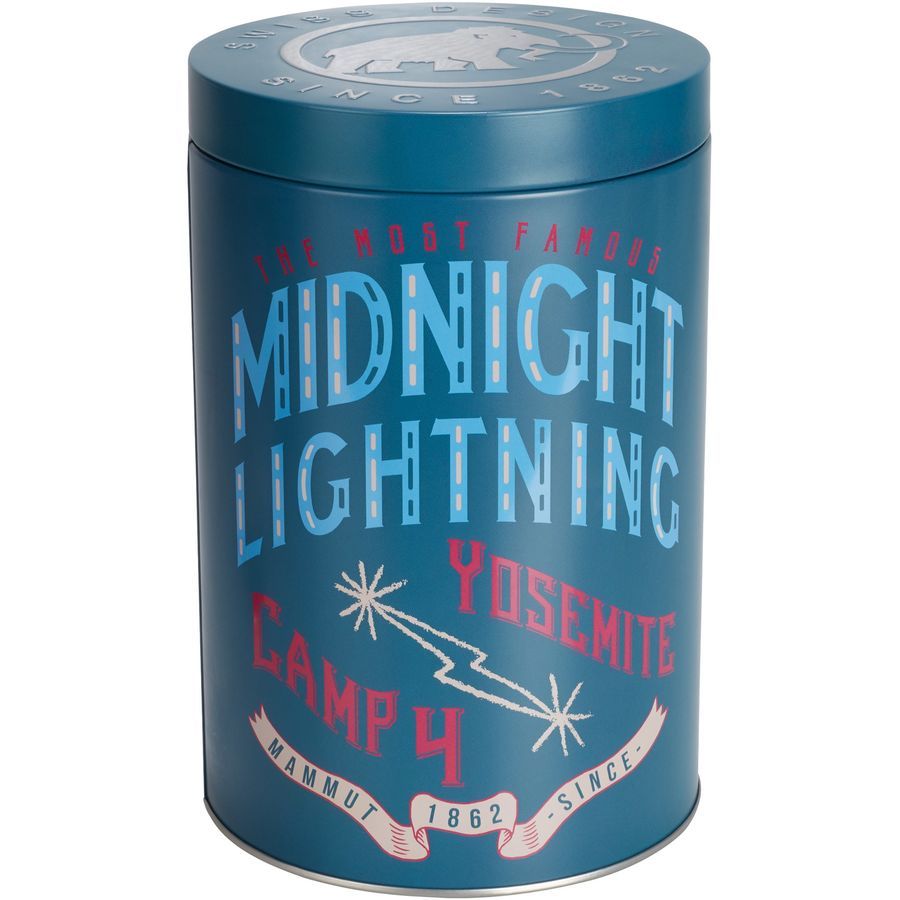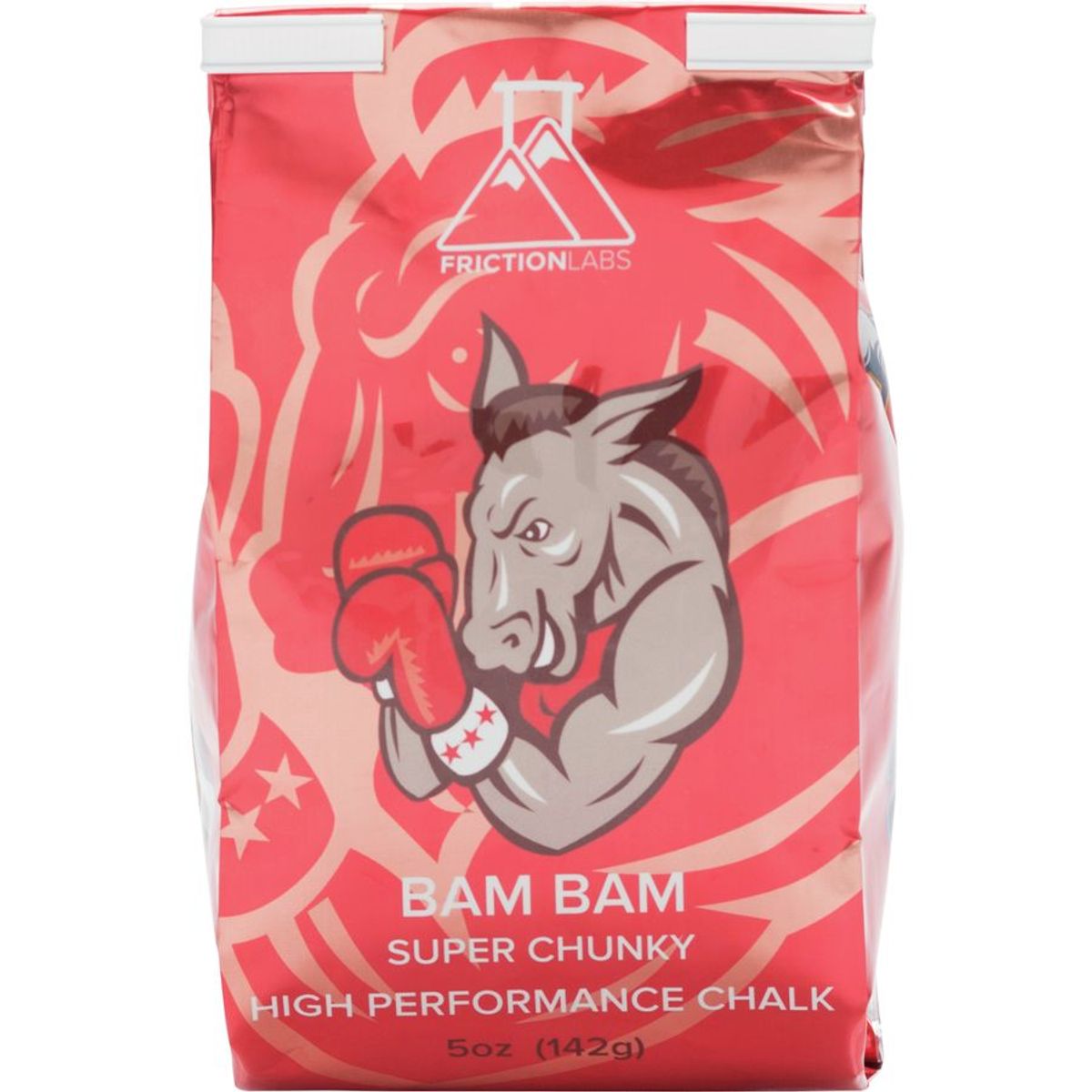I’ve been introducing climbing to a lot of my friends lately and a common thing I notice is that they don’t want to use chalk. I usually convince them to use mine, but it got me thinking, can you go climbing without chalk?
Chalk is one of the most common tools used by climbers because it helps keep your hands dry so you can grip the rock without slipping. However, some people can climb without chalk. In fact, some people say that chalk doesn’t affect their climbing at all. So when do you need to use chalk for climbing and when can you climb without chalk?
What Does the Science Say?
While doing research on this topic, I found multiple studies published in the US National Library of Medicine National Institutes of Health about the effects of climbing with chalk and if it actually makes a difference. Not surprisingly, the outcomes of the studies depended on what relationship between climbing and chalk that researchers were looking at. Some research suggested that chalk didn’t make a difference, and some research suggested that there was a significant difference.
For example, One study from 2001 took 15 climbers and measured the friction between chalk covered hands and non-chalk covered hands. To do this, participants applied a force with the tip of their fingers to hold a flattened rock, while a tangential force pulled the rock away. According to this study, one should minimize particles of chalk in order to have the most friction, thus suggesting that chalk is more harmful than helpful.
In contrast, a study in 2012 looked at 11 experienced climbers over 42 test sessions where participants hung from holds which were fixed on a specially designed hang board with and without chalk. The results showed that there was a significant positive effect of chalk and friction.
In addition, a study from 2016 looked at 19 climbers’ body position and muscular activity of the finger flexors while they climbed routes. What they found was that chalk didn’t make a difference with friction, but participants were able to hang longer with chalk, which may allow for prolonged rests, and more time to plan the next series of climbing moves.
Opposing conclusions from different studies make it difficult to use science to decide if you should use chalk while climbing. However, since everyone climbs differently and climbing chalk affects everyone differently, it is safe to say that the decision to use or not use climbing chalk is different for everyone. With that being said, it is necessary to look at more personalized reasons whether you should use climbing chalk.
When You Don’t Need Chalk For Climbing
To my surprise, a lot of rock climbers climb without chalk. There are a few different reasons why, for example, some people believe that chalk is just a mental crutch that rock climbers use and it is a waste of money. The most common reasons, however, are because they either have dry hands/don’t sweat very often or they have some sort of environmental concerns about rock climbing chalk.
Dry Hands/Don’t Sweat: Climb Without Chalk
Everyone knows that hands come in different shapes and sizes, but they also have different levels of oiliness/dryness and sweat levels. Since climbing chalk’s main purpose is to dry out the skin and prevent sweat from coming between your hands and the rock during a climb, some people don’t even need rock climbing chalk. If you worry about frequent chapped skin, you may be one of those people and don’t need climbing chalk.
In addition, the use of chalk may actually make your hands sweat more. Some rock climbers claim that when they started climbing, they didn’t have to worry about sweaty palms or oily skin, but because they started using chalk, their hands started to create more oil to compensate. It is possible that if they had not used chalk when starting, their hands probably wouldn’t have started making more oil and thus they wouldn’t need to use chalk. But now that those climbers have been using chalk, they have to continue using it.
Environmental Cost of Climbing Chalk
Most climbers recognize that inhaling climbing chalk isn’t healthy, so I’m not going to say any more about that. Instead, let’s talk about the environmental concerns that may make you feel like climbing chalk isn’t for you. The two main environmental concerns are regarding the production of climbers chalk, also known as Magnesium Carbonate and what often happens when climbers use climbing chalk outdoors.
As for mining Magnesium Carbonate, an article on Climbing.com explains that most climbing chalk is sourced from magnesite mines in China. The mining process and poor filtration of airborne particles during the calcination or heating process of mining magnesite create a layer of dust in the surrounding area that is harmful to the residents and the environment. The dust causes “large-scale plant death, soil degradation, and reduced microbial activity.”
Such concerns for mining magnesite has caused some climbers to use alternatives to climbing chalk because they don’t want to be part of the environmental costs that come from purchasing climbers chalk. Finding an alternative to Magnesium Carbonate chalk, however, can be difficult. For example, even liquid chalk is made with Magnesium Carbonate.
In regards to climbing chalk for outdoor climbing, white chalk has been recognized as a form of graffiti in many areas. There are many areas that prohibit the use of white chalk because it changes the natural beauty of the rock face. For areas that prohibit the use of white chalk, many climbers decide not to use chalk at all. However, some climbers will either use chalk brushes to remove any chalk residue left over from the climb, or they will use products such as The Eco Ball. The Eco Ball is a different kind of chalk that is “virtually clear and leaves no trace.”
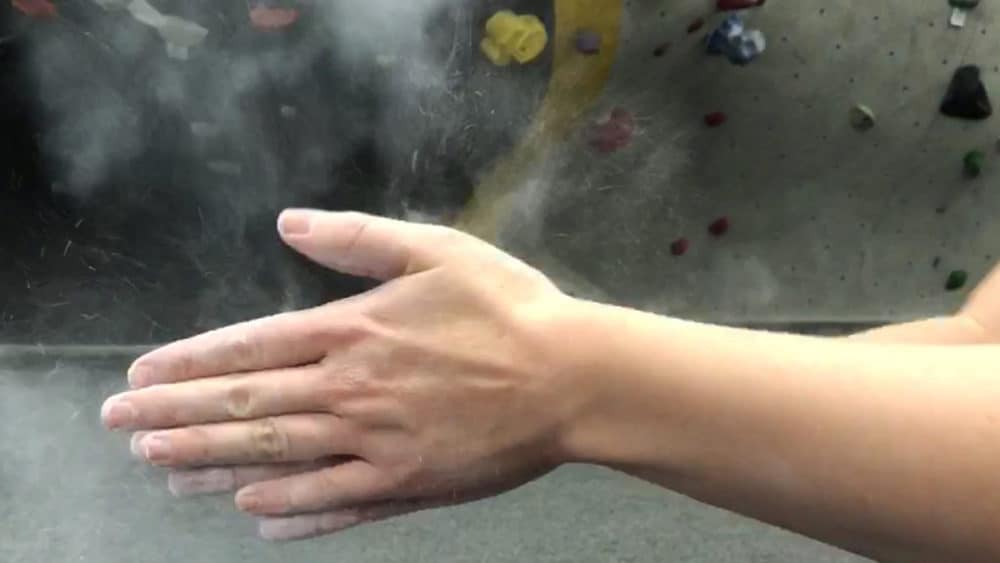
When You Should Use Chalk For Climbing
For most climbers, chalk is an important tool that allows them to climb more difficult routes and climb longer. The main reason for this is because climbing chalk absorbs the oil and sweat that is on the palms and fingers of climbers. Even though research has opposing views about the effects of climbing chalk, most climbers believe that the removal of oil and sweat helps create friction. In addition, I learned that when your hands are oily/sweaty, your hands may be more susceptible to getting flappers and other skin-related injuries.
Climbing Chalk For Sweaty/Oily Hands
If you frequently find yourself wiping your hands on your pants before shaking someone’s hand then you probably have naturally sweaty hands. Sweaty hands may be a small inconvenience in your normal day-to-day life, but unfortunately, sweat between the skin of your hands and the rock can cause you to slip, which is why most climbers use chalk.
If you find yourself sweating through chalk frequently throughout your climbing sessions, then you may want to do more than just chalk up before and during your climb. There are products that are for more long term dryness such as Antithydral Cream, which depending on the frequency of your climbing and how oily your skin is, you can apply to your hands one to three times a week. Antithydral Cream dries out your skin and creates calluses so if you use this product, make sure you are properly sanding your calluses down and caring for them properly.
Climbing Chalk to Prevent Skin-Related Injuries
I was surprised to learn that chalk can help prevent skin-related injuries such as flappers. When your hands are too moist (don’t we love that word “moist”…) your skin begins to stick to the handholds and rock surface, which is a common cause of flappers. On the other hand, if your hands are too dry, especially if calluses are too dry, then the skin breaks easier, and thus you are more likely to get a flapper. The way climbing chalk helps is by controlling the amount of moisture on your hands.
Whether your hands are too moist or too dry, make sure you wash the climbing chalk off after each climbing session. There is no benefit to leaving chalk on your hands after climbing and washing it off allows for your skin to recalibrate and heal.
I know I need chalk…
There are opposing views for whether you should climb without chalk, both scientific and personal reasons so it is safe to say that when deciding if you want to climb with chalk, it is up to personal preference.
Some rock climbers use climbing chalk for sweaty hands and some people go climbing without chalk. If you are concerned about the environmental impact of chalk, then you may want to consider finding an alternative to magnesium carbonate. Though it is important that you do your research to make sure the alternatives don’t have other environmental concerns.
Share your experience with climbing with/without chalk in the comments below. Do you climb with chalk? Why?
More Buyer’s Guides:
- The Top 5 Crash Pads For Bouldering: How To Decide Which Is Best
- Diy Hangboard With Jugs And Edges For Less Than $15
- 6 Of The Best Belay Devices For Beginner Climbers
- The Best 11 Climbing Shoes Under $100
- Climbing Chalk: Chunky Vs. Fine
- The Best Chalk For Climbing And Bouldering
- Rock Climbing Starter Kits For Beginners Compared
- Liquid Chalk Vs. Dry Chalk For Bouldering (Hint: Dry Chalk Is Better)
- Top 5 Gear You Need In Your Climbing Pack For The Best Experience
- What To Wear While Bouldering
- Should You Upgrade To An Assisted-Braking Belay Device?
- Everything You Need To Know About Climbing Chalk
- 37 Things Serious Climbers Bring With Them To The Mountains
- Clothing For Climbing In The Gym – What Should You Wear?
- Can You Climb Without Chalk?
- How Tight Climbing Shoes Should Fit For The Best Performance
- Harnesses For Rappeling
- My Favorite Harness For Climbing
- What You Should Wear While Climbing
- What Affects How Climbing Shoes Fit?
- How To Clean Your Grigri
- How To Care For Your Climbing Rope

